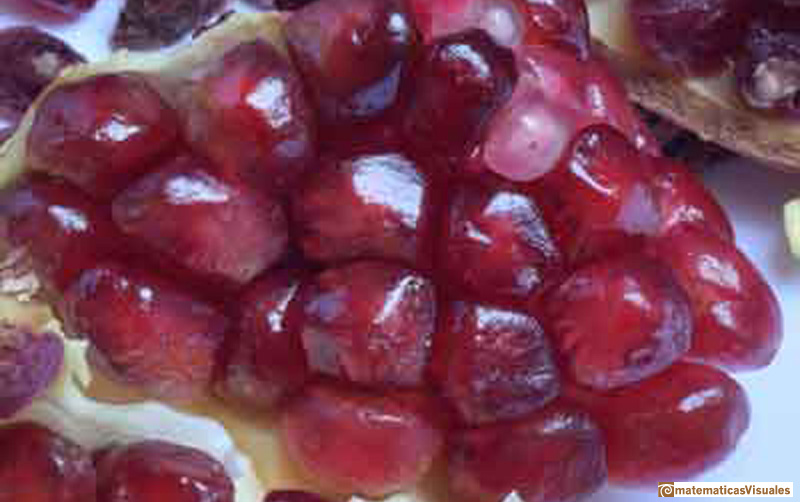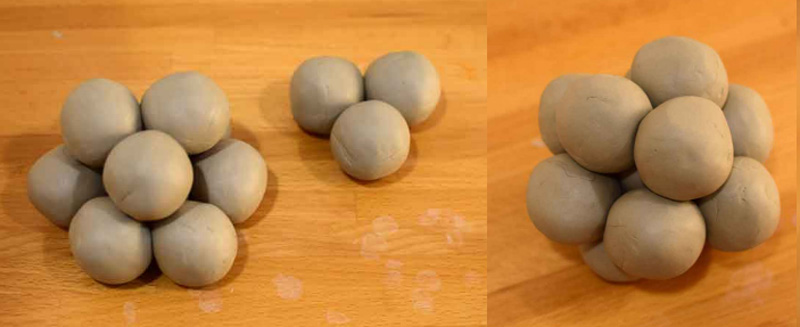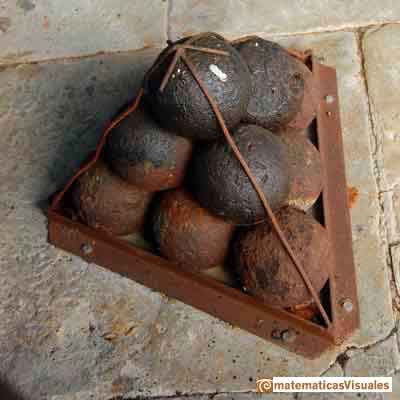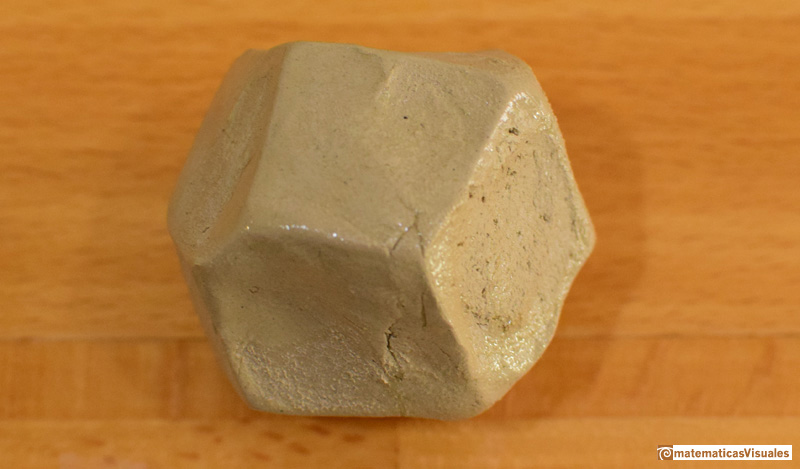- About MAA
- Membership
- MAA Publications
- Periodicals
- Blogs
- MAA Book Series
- MAA Press (an imprint of the AMS)
- MAA Notes
- MAA Reviews
- Mathematical Communication
- Information for Libraries
- Author Resources
- Advertise with MAA
- Meetings
- Competitions
- Programs
- Communities
- MAA Sections
- SIGMAA
- MAA Connect
- Students
- MAA Awards
- Awards Booklets
- Writing Awards
- Teaching Awards
- Service Awards
- Research Awards
- Lecture Awards
- Putnam Competition Individual and Team Winners
- D. E. Shaw Group AMC 8 Awards & Certificates
- Maryam Mirzakhani AMC 10 A Awards & Certificates
- Two Sigma AMC 10 B Awards & Certificates
- Jane Street AMC 12 A Awards & Certificates
- Akamai AMC 12 B Awards & Certificates
- High School Teachers
- News
You are here
Kepler and the Rhombic Dodecahedron: Stacking Cannonballs
Reading Kepler's book De Nive Sexangula [Kepler 1611] is an enriching experience, not only because of the ideas about which he wrote, but also because he was describing how his own creativity worked. It is an opportunity to gain a sense of the mind of a genius in action!
After his detailed description of how bees close the bottom of their cells, which he related to the rhombic dodecahedron, Kepler’s mind seemed to jump from topic to topic without apparent connections. For instance, he took a look at peas and the seeds of pomegranates. He noticed that these seeds, when they grow, are squeezed into shapes that have rhombic faces.

Figure 14. Pomegranate seeds with rhombic faces.
After pondering these examples inspired by nature, Kepler’s train of thought made what seems to be a radical change. He next took up the discussion of a popular technical problem of the time period: what is the best way to pile up cannonballs?
Kepler may have become interested in the question of the stacking of spheres through Thomas Harriot (ca 1560–1621). Harriot was an English mathematician, astronomer, and a friend and adviser to Sir Walter Raleigh (ca 1552–1618). Raleigh asked Harriot to solve several problems about the stacking of cannonballs because, as a sea explorer, he needed to deal with the issue on a practical level. Harriot solved these problems and went further by considering their connection with the then-new atomic theory of matter. Today, Harriot is considered one of the greatest mathematicians of his time. The range of his interests was wide and included mathematics (where he made important contributions to algebra), optics, and astronomy (where he built telescopes in order to make his own observations).
It is not known whether Harriot shared the problem of the best way to pack cannonballs with Kepler. We do know that they exchanged a few letters, with optics as the main subject of their correspondence. It was also very common in those days to circulate letters among friends and colleagues, and Kepler corresponded with many people.
However it may have come to his attention, Kepler became interested in the problem of stacking spheres and wrote about it in De Nive Sexangula. But how did Kepler link honeycombs and the seeds of pomegranates with this technical problem? As we are about to see, he did this by cleverly turning stacked cannonballs into rhombic dodecahedra.
Figure 15. A stack of cannonballs.
To begin, Kepler wrote:
In general, spheres of equal size will arrange themselves in one of two ways when placed in a container, corresponding to the two ways in which they can be arranged on a plane.
For if you take a number of spheres of equal size scattered over a horizontal plane and gather them into a small space so that they touch one another, they will come together either in a triangular or in a square arrangement. In the first case, each is surrounded by six others; in the latter, by four; and the pattern of contact is everywhere the same, except for the spheres on the edges. A pentagonal arrangement fails to produce a uniform distribution, while a hexagonal arrangement can be resolved into triangles. Thus, only the two aforementioned arrangements are possible [Kepler 1611, 55].
To make sense of this idea, we can start with a triangular or square arrangement of cannonballs and put more layers of spheres in the holes, like a grocer organizing oranges. Kepler himself noticed three things about such arrangements:
- These two apparently different arrangements (triangular or square base) are, in fact, equivalent. In both cases each sphere is surrounded by twelve others. Kepler explained this by writing:
There can be no triangular ordering without the square and vice versa [Kepler 1611, 59].
This is not immediately obvious, but the following video offers a good visual explanation:
There can be no triangular ordering without the square and vice versa.
Filmed in the workshop of the ceramist Luis Larriba in Tartanedo (Guadalajara, Spain).
- This is the tightest possible solid arrangement of spheres; that is, it wastes the least amount of space. This claim became known as the Kepler Conjecture. Despite the intuitive appeal of this simple conjecture, it took mathematicians nearly 400 years to formally prove it is correct. Many tried, and it was considered important enough that the influential mathematician David Hilbert (1862–1943) included it in his famous list of the 23 most significant problems that mathematicians should try to solve in the 20th century in order to advance the development of mathematics. Kepler’s Conjecture was finally proved by Thomas Hales and his graduate student Samuel Ferguson in 1998 with the help of computers; even then, the proof was so complicated that it wasn’t fully checked and published until 2005.
- When compressed, the spheres become rhombic.
Kepler’s third observation may seem the most unexpected; after all, only a very creative mind could have thought about squeezing iron balls! But was Kepler right?
To squeeze iron cannonballs is difficult, but we can try the same experiment using clay balls. We need thirteen such balls, which we will put into the following arrangement (with the bottom layer of three balls rotated so that it does not align exactly with the top layer) and then we will squeeze them carefully . . .

Figure 16. Preparation for the experiment of compressing spheres.
Compressing the spheres.
. . . and we get a rhombic dodecahedron. Easy and surprising!
Figure 17. The central sphere after squeezing: a rhombic dodecahedron.
If we imagine that we squeeze hundreds of balls in this way, we can see that we will get a lot of rhombic dodecahedra. We then conclude again that the rhombic dodecahedron tessellates space.
This was the incredible connection that Kepler found between how bees build their cells, how the seeds of pomegranates grow, and how best to pile up cannonballs. He was inspired first by nature and then by a technical problem—and he was able to blend these two perspectives wonderfully.
While Kepler’s idea of squeezing cannonballs is fresh in our minds, this is a good moment to go back to honeycombs in order to look for a plausible physical explanation of how bees build their cells. D’Arcy Thompson touched on this in his book On Growth And Form:
The most famous of all hexagonal conformations, and one of the most beautiful, is the bee’s cell. As in the basalt or the coral, we have to deal with an assemblage of co-equal cylinders, of circular section, compressed into regular hexagonal prisms; but in this case we have two layers of such cylinders or prisms, one facing one way and one the other, and a new problem arises in connection with their inner ends. We may suppose the original cylinders to have spherical ends, which is their normal and symmetrical way of terminating; then, for closest packing, it is obvious that the end of any one cylinder in the one layer will touch, and fit in between, the ends of three cylinders in the other. It is just as when we pile round-shot in a heap; we begin with three, a fourth fits into its nest between the three others, and the four form a “tetrad,” or regular tetragonal arrangement.
Just as it was obvious, then, that by mutual pressure from the sides of six adjacent cells any one cell would be squeezed into a hexagonal prism, so is it also obvious that, by mutual pressure against the ends of three opposite neighbours, the end of each and every cell will be compressed into a trihedral pyramid [Thompson 1942, 525].
We will next see how stacked spheres lead us to two other polyhedra before turning to Kepler’s third approach to the rhombic dodecahedron.
Roberto Cardil (matematicasVisuales), "Kepler and the Rhombic Dodecahedron: Stacking Cannonballs," Convergence (March 2022)






